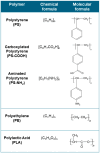Interaction of Micro- and Nanoplastics with Enzymes: The Case of Carbonic Anhydrase
- PMID: 39273668
- PMCID: PMC11396312
- DOI: 10.3390/ijms25179716
Interaction of Micro- and Nanoplastics with Enzymes: The Case of Carbonic Anhydrase
Abstract
Microplastics (MPs) and nanoplastics (NPs) have emerged as significant environmental pollutants with potential detrimental effects on ecosystems and human health. Several studies indicate their interaction with enzymes; this topic represents a multifaceted research field encompassing several areas of interest from the toxicological and ecotoxicological impact of MPs and NPs on humans and wildlife to the biodegradation of plastics by microbial enzymes. This review aims to provide a critical analysis of the state-of-the-art knowledge of the interaction of MPs and NPs on the enzyme carbonic anhydrase (CA), providing recent insights, analyzing the knowledge gaps in the field, and drawing future perspectives of the research and its application. CA is a widespread and crucial enzyme in various organisms; it is critical for various physiological processes in animals, plants, and bacteria. It catalyzes the reversible hydration of CO2, which is essential for respiration, acid-base balance, pH homeostasis, ion transport, calcification, and photosynthesis. Studies demonstrate that MPs and NPs can inhibit CA activity with mechanisms including adsorption to the enzyme surface and subsequent conformational changes. In vitro and in silico studies highlight the role of electrostatic and hydrophobic interactions in these processes. In vivo studies present mixed results, which are influenced by factors like particle type, size, concentration, and organism type. Moreover, the potentiality of the esterase activity of CA for plastic degradation is discussed. The complexity of the interaction between CA and MPs/NPs underscores the need for further research to fully understand the ecological and health impacts of MPs and NPs on CA activity and expression and glimpses of the potentiality and perspectives in this field.
Keywords: biomarker; carbonic anhydrase; ecotoxicological effects; emergent pollutant; enzymes; esterase activity; microplastics; nanoplastics; plastic degradation; toxicological effects.
Conflict of interest statement
The authors declare no conflict of interest.
Figures




Similar articles
-
Recent advances in toxicological research and potential health impact of microplastics and nanoplastics in vivo.Environ Sci Pollut Res Int. 2022 Jun;29(27):40415-40448. doi: 10.1007/s11356-022-19745-3. Epub 2022 Mar 26. Environ Sci Pollut Res Int. 2022. PMID: 35347608 Review.
-
Role of organisms and their enzymes in the biodegradation of microplastics and nanoplastics: A review.Environ Res. 2023 Sep 1;232:116281. doi: 10.1016/j.envres.2023.116281. Epub 2023 Jun 3. Environ Res. 2023. PMID: 37276977 Review.
-
Effects of microplastics and nanoplastics on marine environment and human health.Environ Sci Pollut Res Int. 2020 Dec;27(36):44743-44756. doi: 10.1007/s11356-020-10573-x. Epub 2020 Sep 2. Environ Sci Pollut Res Int. 2020. PMID: 32876819 Review.
-
Bioaccumulation and ecotoxicological impact of micro(nano)plastics in aquatic and land snails: Historical review, current research and emerging trends.J Hazard Mater. 2023 Feb 15;444(Pt A):130382. doi: 10.1016/j.jhazmat.2022.130382. Epub 2022 Nov 16. J Hazard Mater. 2023. PMID: 36417779 Review.
-
Effects of micro- and nanoplastics on blood cells in vitro and cardiovascular parameters in vivo, considering their presence in the human bloodstream and potential impact on blood pressure.Environ Res. 2025 May 15;273:121254. doi: 10.1016/j.envres.2025.121254. Epub 2025 Feb 28. Environ Res. 2025. PMID: 40024503 Review.
Cited by
-
Impact of polyethylene terephthalate nanoplastics (PET) on fibroblasts: a study on NIH-3T3 cells.Front Physiol. 2025 Jun 9;16:1580682. doi: 10.3389/fphys.2025.1580682. eCollection 2025. Front Physiol. 2025. PMID: 40551897 Free PMC article.
References
-
- Mojiri A., Vishkaei M.N., Zhou J.L., Trzcinski A.P., Lou Z., Kasmuri N., Rezania S., Gholami A., Vakili M., Kazeroon R.A. Impact of polystyrene microplastics on the growth and photosynthetic efficiency of diatom Chaetoceros neogracile. Mar. Environ. Res. 2024;194:106343. doi: 10.1016/j.marenvres.2024.106343. - DOI - PubMed
-
- Mutuku J., Yanotti M., Tocock M., Hatton MacDonald D. The Abundance of Microplastics in the World’s Oceans: A Systematic Review. Oceans. 2024;5:398–428. doi: 10.3390/oceans5030024. - DOI
Publication types
MeSH terms
Substances
Grants and funding
LinkOut - more resources
Full Text Sources

